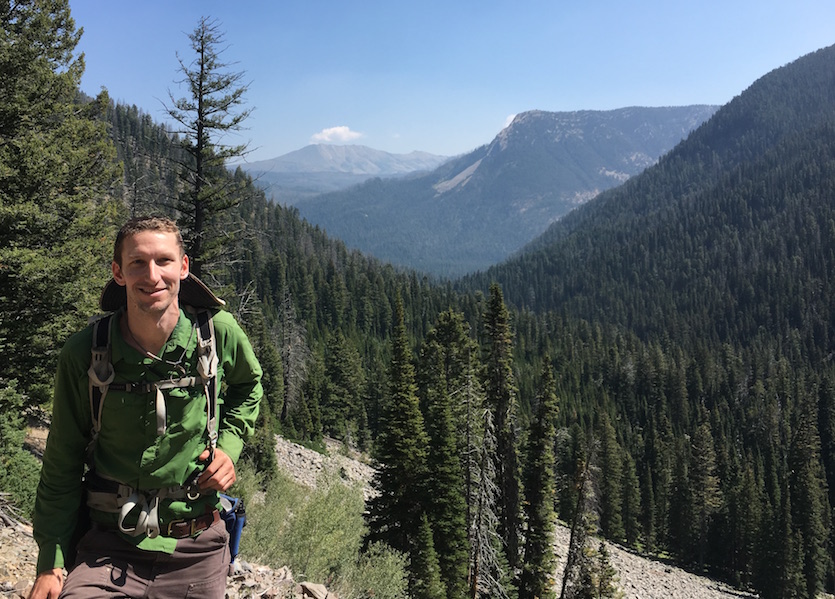ISU Professor Dave Pearson receives National Science Foundation funding to better understand how Idaho, Montana mountains formed
September 1, 2017

POCATELLO – Idaho State University Assistant Professor Dave Pearson is teaming up with collaborators to better understand how mountain ranges in Central Idaho and Southwest Montana formed.
His efforts are part of a National Science Foundation (NSF) $570,000-funded study, of which ISU’s portion is about $172,000. Pearson will be collaborating with researchers from the University of Illinois at Urbana-Champaign and the University of Iowa.
“It is an investigation involving a lot of field work and the isotopic dating of minerals in Central Idaho and Southwest Montana,” Pearson said. “We are trying to understand how and when the mountains got the way they are, which has implications for how other mountain ranges around the world grow.”
At Idaho State University, Pearson will be assisted by a doctoral student, a master's student and one or two undergraduate students.
The ranges that Pearson and his colleagues will study include the Lost River and Lemhi ranges in Idaho, the Beaverhead Range that is a long the Idaho-Montana border, and the Tendoy, Ruby, Madison and Gravelly mountains in Montana. Some of these are ancient mountains that formed more than 80 million years ago.
These ranges in Idaho and Montana Pearson is studying differ from the long, linear mountains located along long fault lines such as the Canadian Rockies, Himalayas and Andes. Geologists know that most big mountain ranges form where two tectonic plates smash together, shortening the Earth’s crust so the crust floating on top gets thicker and higher. Pearson and his colleagues believe that some unique characteristics of the mountains of Idaho and Montana were caused by a lack of gooey sedimentary rock layers, such as shale, before the mountains formed.
“The mountains in the northern United States we are studying are not as narrow, are much more spread out, and have a much more irregular distribution than mountains like the Canadian Rockies,” Pearson said. “The mountains we are studying go into weird orientations, are spaced further apart and are fundamentally different. The research from this proposal is trying to understand what’s the main factor that causes mountains to have one shape or another.”
Pearson said the study has a lot of applications including helping scientists identify potential types of places where productive oil and gas deposits occur and to better understand seismic hazards in other, active mountain ranges like the Andes and Himalayas.
The grant includes funding for a weeklong field trip for high school teachers in Montana and Idaho next summer, who will visit mountains in Idaho and then travel to places in Southwest Montana.
The official title of Pearson’s NSF grant is “Collaborative Research: Evaluating controls on orogenic structural style by constraining the spatio-temporal evolution of a retroarc thrust belt.”
For more information, contact Pearson at 208-282-3486 or peardavi@isu.edu.
Categories:
